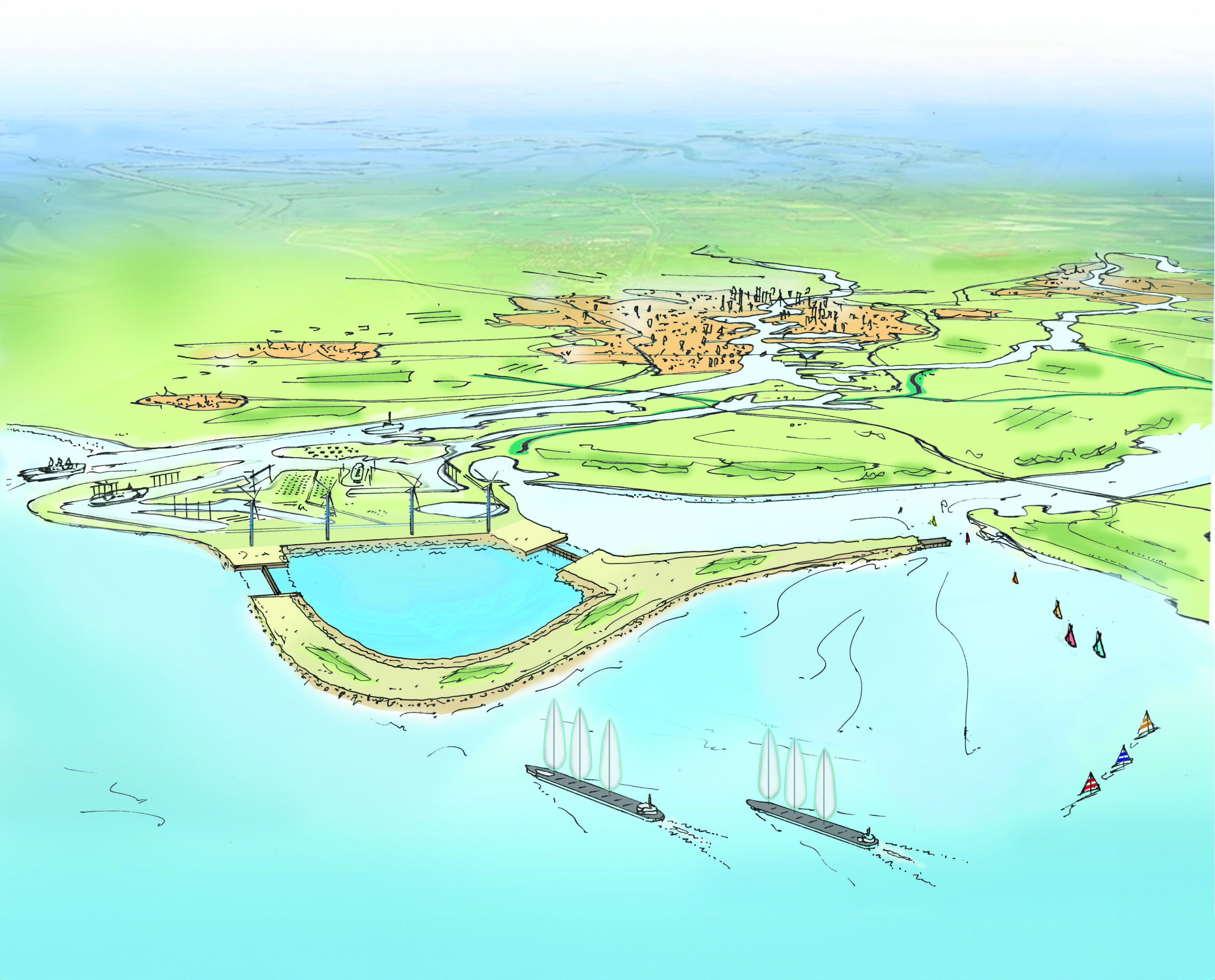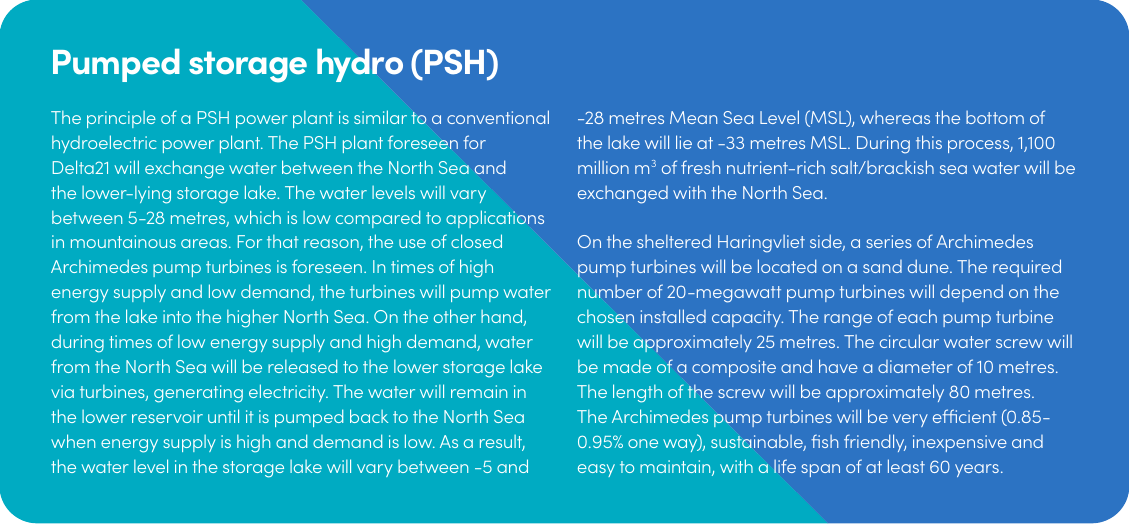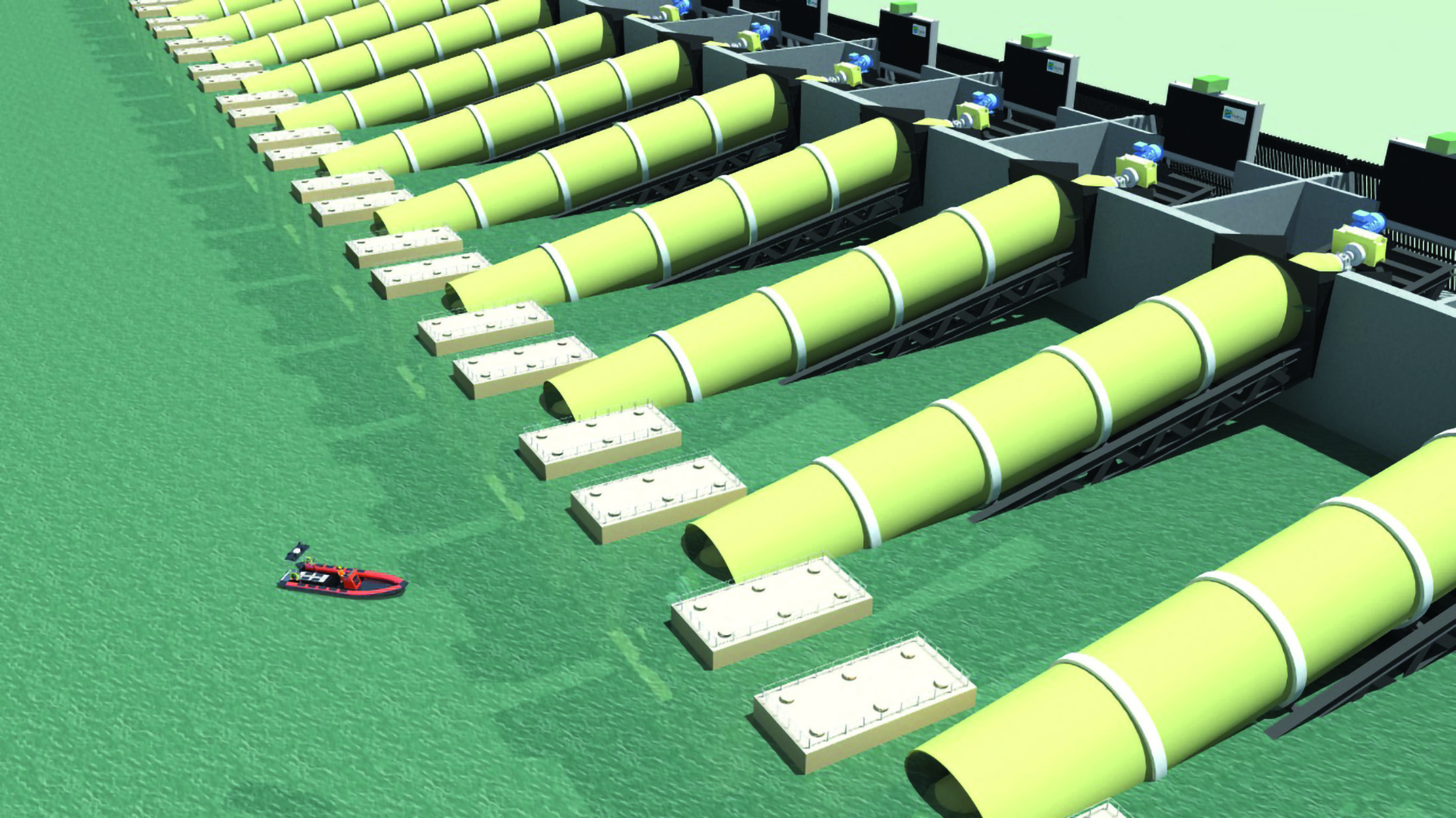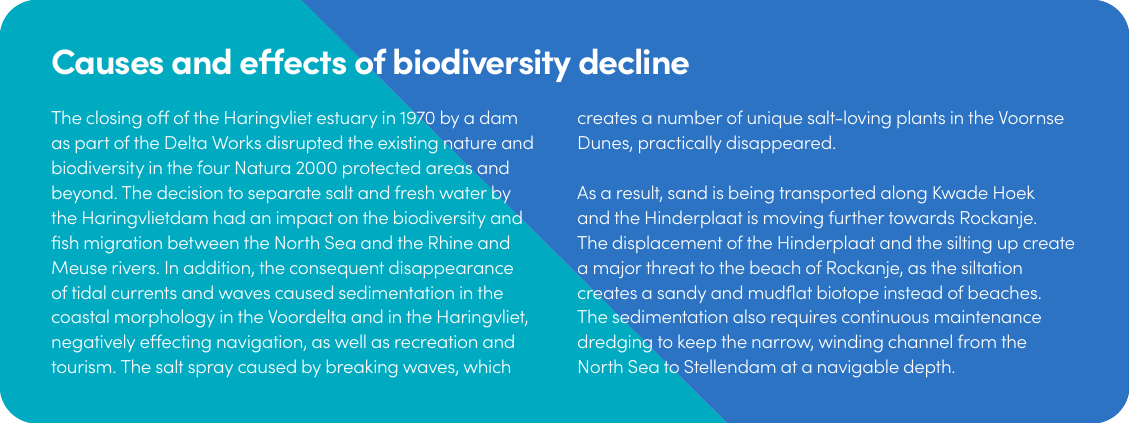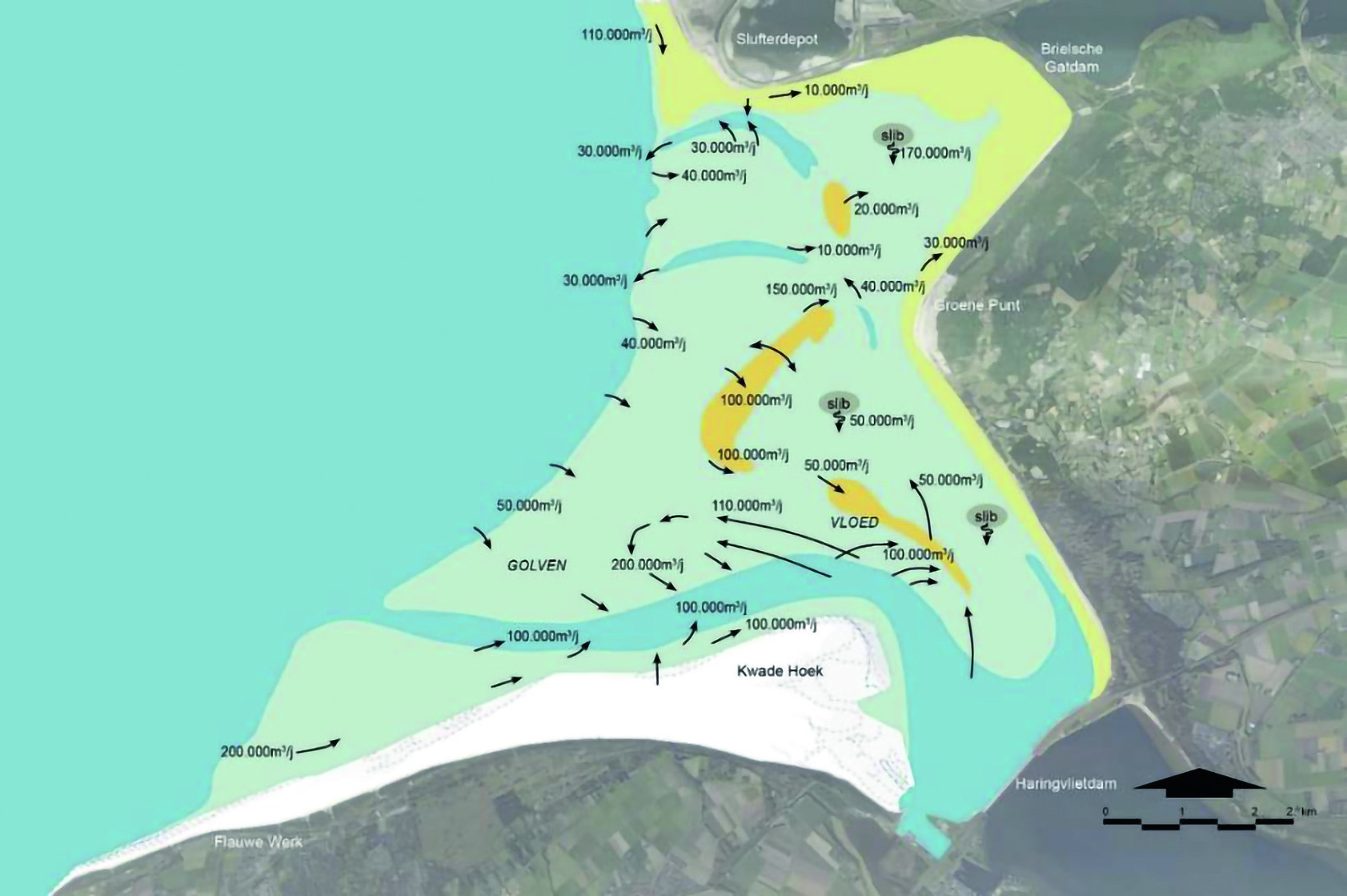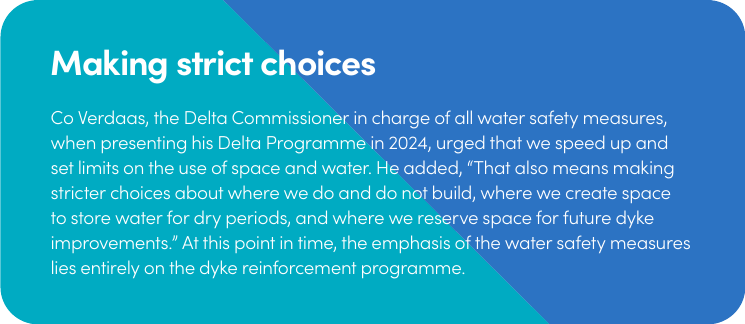Building with nature through an integrated approach
The Delta21 project involves creating a 32-metre-deep lake in the Dutch Delta, which will be used to store approximately 34 GWh (gigawatt hours) of sustainably generated energy using the Pumped Storage Hydro (PSH) principle. Utilising pumps with a capacity of 10,000 m3 per second, the project will also improve the flood protection in the Dutch Delta. The strategic position of the site near Maasvlakte 2 (Rotterdam’s new port area) in the offshore Delta also offers great opportunities to strengthen both biodiversity and the ecosystem in the mouth of the Haringvliet. It provides an outstanding example of the building with nature approach. The initiators of the concept, Huub Lavooij and Leen Berke, joined forces with several companies, educational institutions and public bodies for the development of this innovative concept.
The Delta21 concept consists of two basins. The 50 km2 storage lake will be the lower basin. Its different water levels will be interconnected with pump turbines, allowing for the generation of gravitational energy due to the differences in height. The North Sea will form the upper basin of the PSH system. The installed capacity could be increased from 2 to 12 gigawatts, allowing the surplus of generated energy to be stored. PSH is proven to be a mature principle that is responsible for 93% of energy storage worldwide.
Given the minimal height differences in the Netherlands, “low-head/high- volume” pump turbines will be used. The storage lake will also provide the possibility of discharging excess water from the river by means of pump turbines, preventing flooding in the hinterland and providing an attractive alternative to constructing dykes in densely populated areas.
The Delta21 concept also offers opportunities for building other eco- friendly solutions, such as floating solar parks, wind parks, aquaculture and other opportunities to strengthen nature and increase biodiversity. The concept could be applied worldwide in flat areas, especially in densely populated low-lying coastal areas, with a demand for energy storage and flood protection where nature conservation is at stake.
The answer to energy transition challenges
The energy transition – the transition from conventional to sustainable energy – places great importance on the security of the electrical supply. The Delta21 concept allows for 34 GWh of energy storage. 2 GW of installed capacity could provide the storage or delivery of 34 GWh in 24 hours, corresponding to a maximum of 5 terawatt hours annually. According to TenneT, Transmission System Operator (TSO) for the Netherlands, this is approximately 10% of the required storage capacity for 2050. The storage capacity could easily and gradually be increased from 2 GW to 12 GW, allowing for the surplus of generated energy to be stored as long as needed. At 12 GW of installed capacity and 4 hours of filling time, the storage lake could produce up to 30 terawatt hours per year. With 40 km2 available for installing solar parks, wind farms and even aqua batteries at the bottom of the lake, an additional amount of energy could also be stored.
On a windless day, there is no energy generated from wind. However, if there is more wind and solar energy available than is used, we often throw that energy away. Large-scale energy storage is therefore essential for maintaining a sustainable energy supply. The energy storage lake in the Delta21 concept can make an important contribution to this


